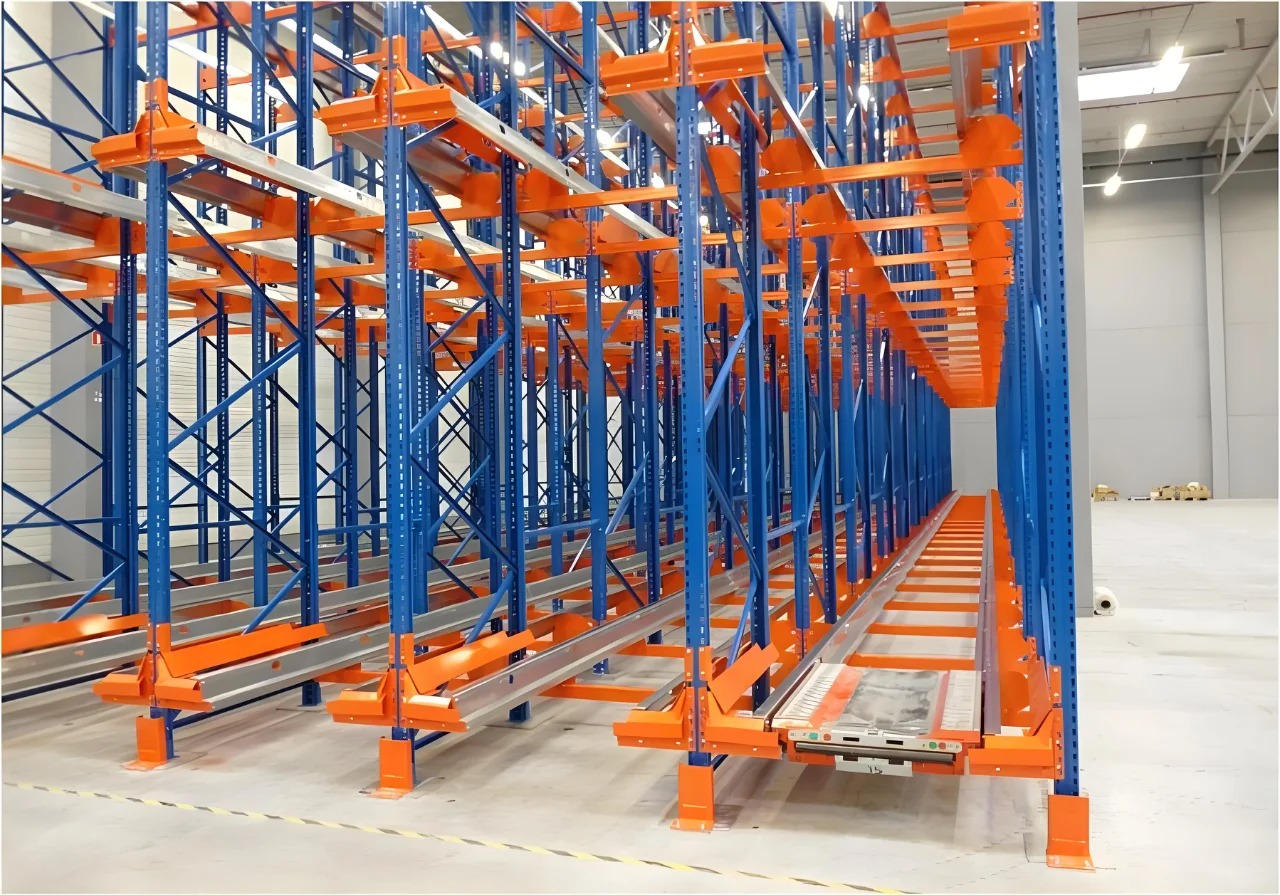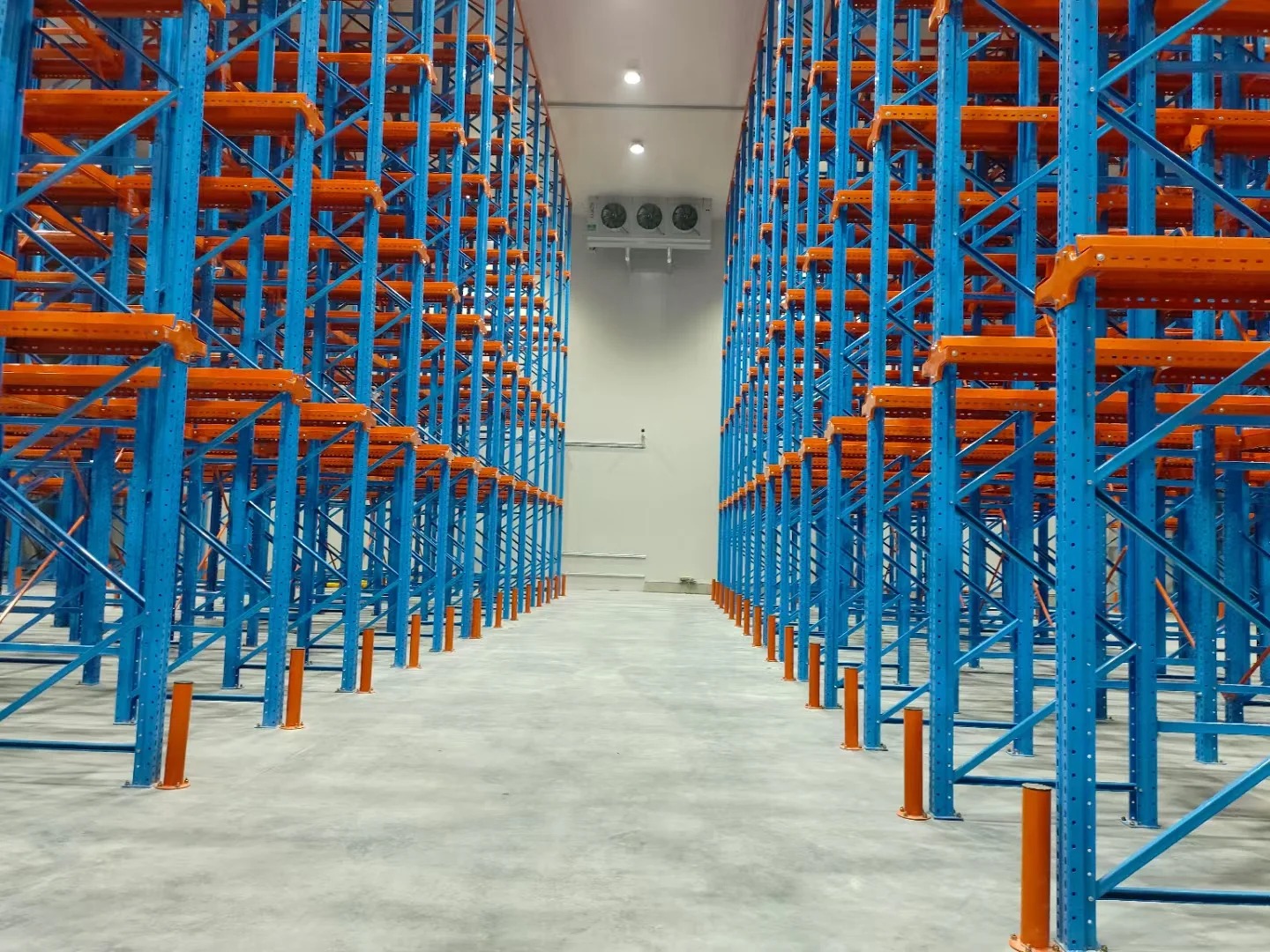In the relentless pursuit of warehouse optimization, maximizing storage density while maintaining reasonable access to inventory is a constant challenge. Among the solutions available, drive through pallet racking stands out as a highly efficient system, particularly suited for high-volume storage of similar products. This comprehensive guide delves deep into drive through pallet racking, exploring its core functionality, structural components, key advantages, ideal applications, critical design considerations, and essential safety protocols. Understanding the nuances of drive through pallet racking empowers businesses to make informed decisions about their storage infrastructure.

What is Drive Through Pallet Racking? Core Functionality Explained
Drive through pallet racking is a high-density storage system designed around the Last-In, First-Out (LIFO) inventory management principle. Unlike selective racking where aisles are accessed from the side, drive through pallet racking features lanes that forklifts physically drive through. Pallets are loaded from one end of the lane and unloaded from the opposite end.
Imagine a tunnel: Forklifts enter one side, place a pallet onto the rails or beams, and exit the other side. To retrieve a specific pallet, the forklift must enter the lane and remove the pallet closest to the exit point. Any pallets stored behind the target pallet must be removed first (hence LIFO). This configuration eliminates the need for multiple aisles between every single rack row, dramatically increasing storage density compared to selective racking. The fundamental design of drive through pallet racking makes it ideal for homogeneous products with high turnover rates where strict rotation is essential.
Anatomy of Drive Through Pallet Racking: Key Structural Components
A robust drive through pallet racking system relies on several critical components working in concert:
1.Upright Frames: These vertical structures form the backbone of the system, supporting the entire load. They are typically heavy-duty, designed to withstand the forces exerted by forklifts operating within the lanes and the weight of stored pallets. Frame depth is crucial and directly relates to the pallet size and required lane depth.
2.Guide Rails (or Lane Guides): Perhaps the most defining feature, these run the entire length of the storage lane on both sides, positioned at the base. They precisely guide the forklift tires, preventing lateral movement and ensuring the truck travels straight down the center of the lane. This is critical for safety and preventing damage to the rack structure and stored goods. Guide rails are paramount in any drive through pallet racking installation.
3.Beams (or Load Beams): Horizontal members connect the upright frames across the lane, forming the support levels for the pallets. In drive through pallet racking, beams are typically installed on both sides of the lane. Pallet support rails or rollers are then mounted onto these beams.
4.Pallet Supports (Rollers, Rails, or Wheels): These are installed on the beams and provide the actual surface for pallets to rest upon. Common types include:Rollers: Allow pallets to be pushed along the lane with minimal friction, facilitating loading and unloading.Wheel Decks: Similar to rollers but using wheels, also enabling easy pallet movement.Sloped Rails: Often used in gravity-flow versions (a subtype), utilizing a slight incline for pallets to move via gravity.Standard Rails: Provide a stable surface; pallets are lifted slightly by the forklift to move them in/out.
5.Braces & Bracing: Diagonal and horizontal braces connect the upright frames, providing essential lateral stability and rigidity to the entire drive through pallet racking structure, especially crucial given the open nature of the lanes.
6.Row Spacers & Ties: These components connect adjacent back-to-back rows of drive through pallet racking, enhancing overall stability across the storage block.
Operational Advantages: Why Choose Drive Through Pallet Racking?
Implementing drive through pallet racking offers significant operational benefits:
1.Exceptional Storage Density: This is the primary advantage. By eliminating numerous aisles required by selective racking and storing pallets in depth (lanes), drive through pallet racking can increase storage capacity by 60-75% or more within the same warehouse footprint. This directly translates to lower real estate costs per pallet position.
2.Efficient Material Handling: Forklift operators travel in straight lines down dedicated lanes, minimizing complex maneuvering. Loading and unloading sequences are straightforward, potentially speeding up operations, especially for full-lane putaway or retrieval. Drive through pallet racking streamlines the movement of high-volume SKUs.
3.Improved Selectivity (Compared to Drive-In): While operating on LIFO, drive through pallet racking offers better selectivity than its close cousin, drive-in racking. Because access is available from both ends, operators aren't forced to enter the lane to load or unload from the same end. This allows for better organization (e.g., dedicating one end for loading, the other for unloading) and slightly faster access to the first pallet at each end.
4.Enhanced Inventory Rotation (LIFO Compliance): The LIFO flow is inherent and enforced by the design. This is ideal for products with expiration dates, batch numbers, or where strict rotation is mandatory (e.g., food, beverages, certain chemicals). Drive through pallet racking naturally supports this requirement.
5.Good Pallet Accessibility (Within LIFO Constraints): While not suitable for accessing any pallet at any time (like selective racking), pallets at the ends of the lanes are readily accessible. Operators only need to enter the lane if retrieving pallets deeper within it.
6.Cost-Effectiveness for Specific Applications: For high-volume, homogeneous product lines requiring LIFO, drive through pallet racking often provides a lower cost per pallet position than selective racking, due to the density advantage, while offering better accessibility than drive-in racking.

Ideal Applications: Where Drive Through Pallet Racking Shines
Drive through pallet racking is not a universal solution but excels in specific scenarios:
1.High-Volume, Homogeneous Products: Perfect for storing large quantities of the same SKU or product with identical characteristics (size, weight).
2.LIFO Inventory Management: Essential for industries requiring strict stock rotation: food and beverage, pharmaceuticals, certain chemicals, agricultural products.
3.Cold Storage & Freezer Warehouses: Maximizing storage density within expensive, temperature-controlled environments is critical. The reduced aisle count in drive through pallet racking minimizes cold air loss and lowers energy costs. The LIFO principle also aligns well with perishable goods.
4.Beverage Distribution: High-volume storage of uniform pallets (cans, bottles) where strict date rotation is crucial.
5.Manufacturing Buffer Storage: Staging large quantities of raw materials or finished goods near production lines where bulk handling is the norm.
6.Tire Warehousing: Efficient storage for large quantities of similarly sized tires on pallets.
7.Seasonal Goods: Managing large influxes of seasonal products requiring efficient bulk storage and rotation.
Critical Design & Implementation Considerations
Successful deployment of drive through pallet racking hinges on meticulous planning:
1.Lane Depth & Height: Determine the optimal number of pallet positions per lane (depth) and the number of storage levels (height). This depends on SKU volume, turnover rates, pallet dimensions/weight, and forklift reach capabilities. Deeper lanes increase density but reduce accessibility to inner pallets. Higher bays require specialized forklifts.
2.Forklift Requirements & Aisle Width: Drive through pallet racking requires specialized narrow-aisle forklifts (NAFs) or very narrow-aisle forklifts (VNAFs) designed to operate within the confines of the lane width defined by the guide rails. The aisle width is determined by the forklift's width plus necessary clearances. Choosing the right truck is paramount. Reach trucks are generally not suitable for standard drive through pallet racking.
3.Pallet & Load Specifications: Precise knowledge of pallet dimensions (length, width, height), weight (including maximum load), and condition (consistent, stable) is non-negotiable for designing beam levels, pallet support systems, and overall structural integrity. Damaged pallets are a significant hazard in these systems.
4.Building Constraints: Evaluate floor flatness, floor load capacity, clear ceiling height, column locations, and potential obstructions (sprinklers, lights, HVAC). Drive through pallet racking structures can be tall and require specific clearances.
5.Flow Direction & Access: Plan the traffic flow: which end(s) of the drive through pallet racking lanes will be used for loading vs. unloading? How will forklifts circulate around the storage block? Dedicated entry and exit points improve efficiency.
6.Pallet Support System Selection: Choose rollers, wheels, or rails based on pallet type, load weight, desired ease of movement, and budget. Gravity-flow systems add cost but further reduce forklift travel within the lane.
7.Professional Engineering & Installation: Due to the complexity and safety-critical nature, drive through pallet racking systems must be designed by qualified structural engineers and installed by certified professionals according to local codes and regulations (e.g., RMI - Rack Manufacturers Institute standards in the US).
Safety Protocols: Operating Safely with Drive Through Pallet Racking
The confined nature of drive through pallet racking lanes demands rigorous safety practices:
1.Specialized Operator Training: Forklift operators must receive specific, extensive training on operating within drive through pallet racking lanes. This includes precise maneuvering, understanding guide rail limitations, safe loading/unloading procedures (especially removing/replacing multiple pallets), speed control, and visibility challenges.
2.Strict Adherence to LIFO: Attempting to access pallets out of LIFO sequence significantly increases the risk of accidents, product damage, and rack collapse. Operators must never climb racks or try to "skip" pallets.
3.Maintaining Clear Lanes: Lanes must be kept completely clear of debris, pallet fragments, or stray items that could impede forklift travel or pallet movement. Regular housekeeping is essential.
4.Load Integrity & Pallet Quality: Only stable, uniformly loaded pallets in good condition should be stored. Damaged pallets or unstable loads can shift, fall, or collapse within the lane, creating severe hazards. Regular pallet inspection is crucial.
5.Speed Limits & Caution: Strict speed limits must be enforced, especially when entering, navigating within, and exiting the narrow lanes of the drive through pallet racking system. Operators must always be aware of their surroundings.
6.Visibility Aids: Forklifts operating in drive through pallet racking should be equipped with excellent lighting and potentially additional mirrors or cameras to enhance operator visibility, especially when reversing.
7.Rack Protection: Installing substantial column guards and lane-end protectors is vital to absorb impacts from forklifts, preventing catastrophic damage to the drive through pallet racking structure's uprights.
8.Regular Inspections: Implement a formal, documented inspection program conducted by trained personnel. Inspections should assess structural integrity (uprights, beams, braces, connections), guide rail condition, pallet support functionality, damage from impacts, and overall safety compliance.
Drive through pallet racking remains a powerhouse solution for warehouses needing to achieve high storage density while managing large volumes of homogeneous products under a LIFO inventory system. Its unique design, utilizing guide rails for forklift navigation through dedicated lanes, offers a compelling balance between space utilization and accessibility for specific operational needs. From cold storage facilities maximizing expensive cubic footage to beverage distributors ensuring strict product rotation, drive through pallet racking delivers significant efficiency and cost benefits.
However, realizing these benefits requires careful consideration. Success hinges on selecting the right application (high-volume, homogeneous SKUs requiring LIFO), meticulous planning of lane depth, height, and layout, investment in compatible narrow-aisle forklifts, rigorous operator training, and unwavering commitment to safety protocols. When implemented correctly and operated safely, drive through pallet racking transforms warehouse storage capacity and streamlines material flow for targeted inventory types, proving itself as an indispensable tool in the modern logistics landscape. Consulting with experienced racking system designers and suppliers is essential to determine if drive through pallet racking is the optimal solution for your specific operational challenges and goals.







